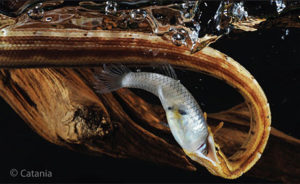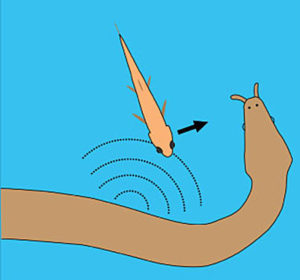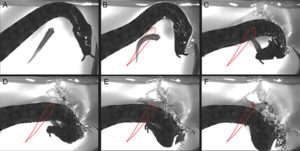 |
||||||
| Tentacled snakes (Erpeton tentaculatum) are fully aquatic, fish-eating specialists. Fish in turn are expert escape artists, presenting a challenge to the snake. This longstanding predator-prey interaction has resulted in the evolution of remarkably deceptive fishing strategies by snakes. When hunting, tentacled snakes adopt a J-shaped posture and wait for fish to approach. Once the fish is in the right position, the snake feints with its body to startle the fish towards the snake’s strike. As a result, the escaping fish often swims partially or completely into the snake’s mouth. For some fish approach angles, tentacled snakes predict and aim for the future location of the escaping fish’s head.
|
||||||
|
||||||
 |
Tentacles snakes turn the fish escape responses to their advantage by activating the Mauthner neurons on the side of the fish opposite from the snake’s striking direction. As a result, the fish usually turns in the wrong direction – toward the snake’s strike. |
 |
| Frames captured with a high-speed video system show a fish being startled into the snake’s mouth (slow motion movie). |
 |
| Frames captured with a high-speed video system show a tentacled snake predicting the future location of an escaping fish (slow motion movie). |

